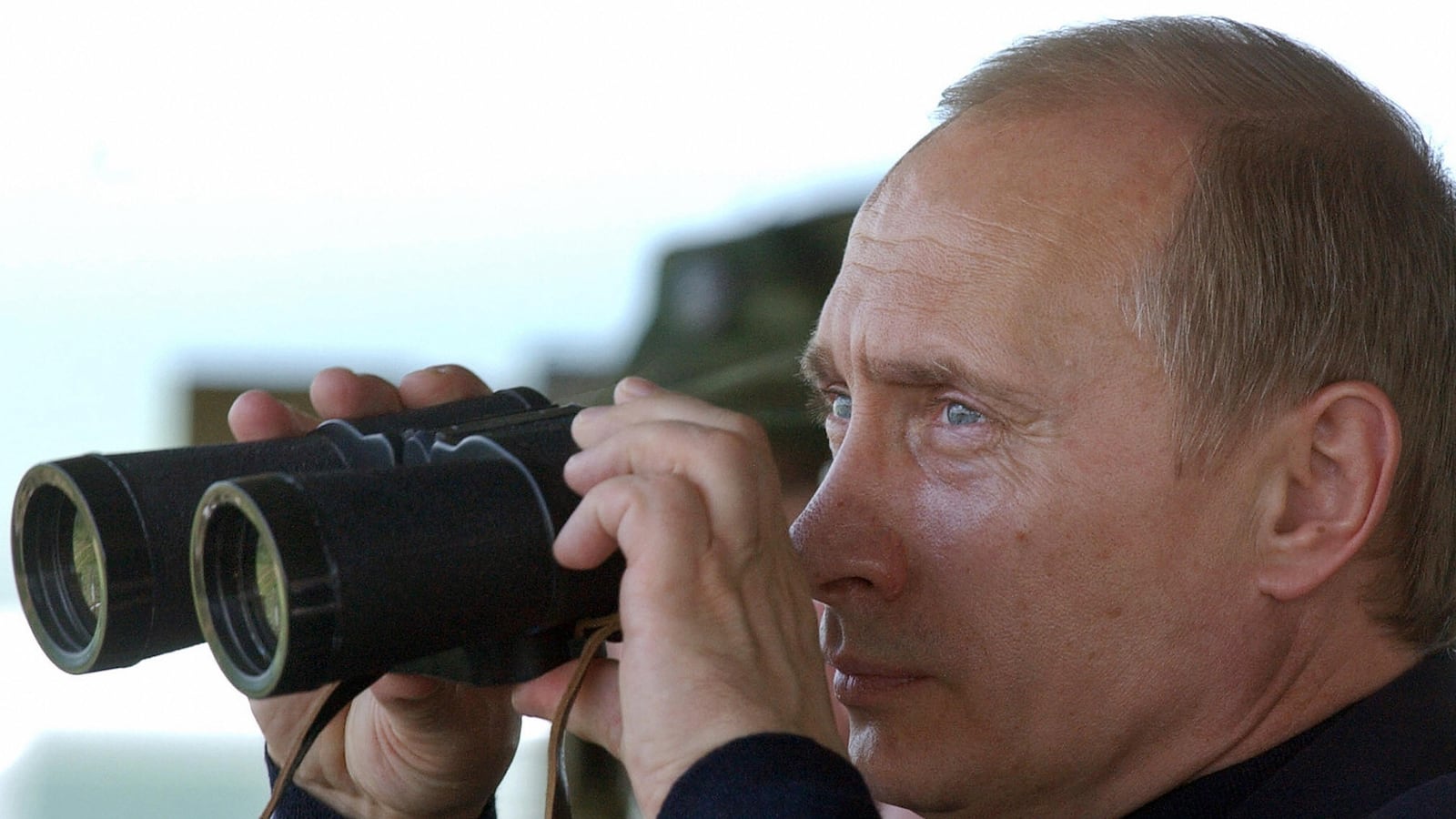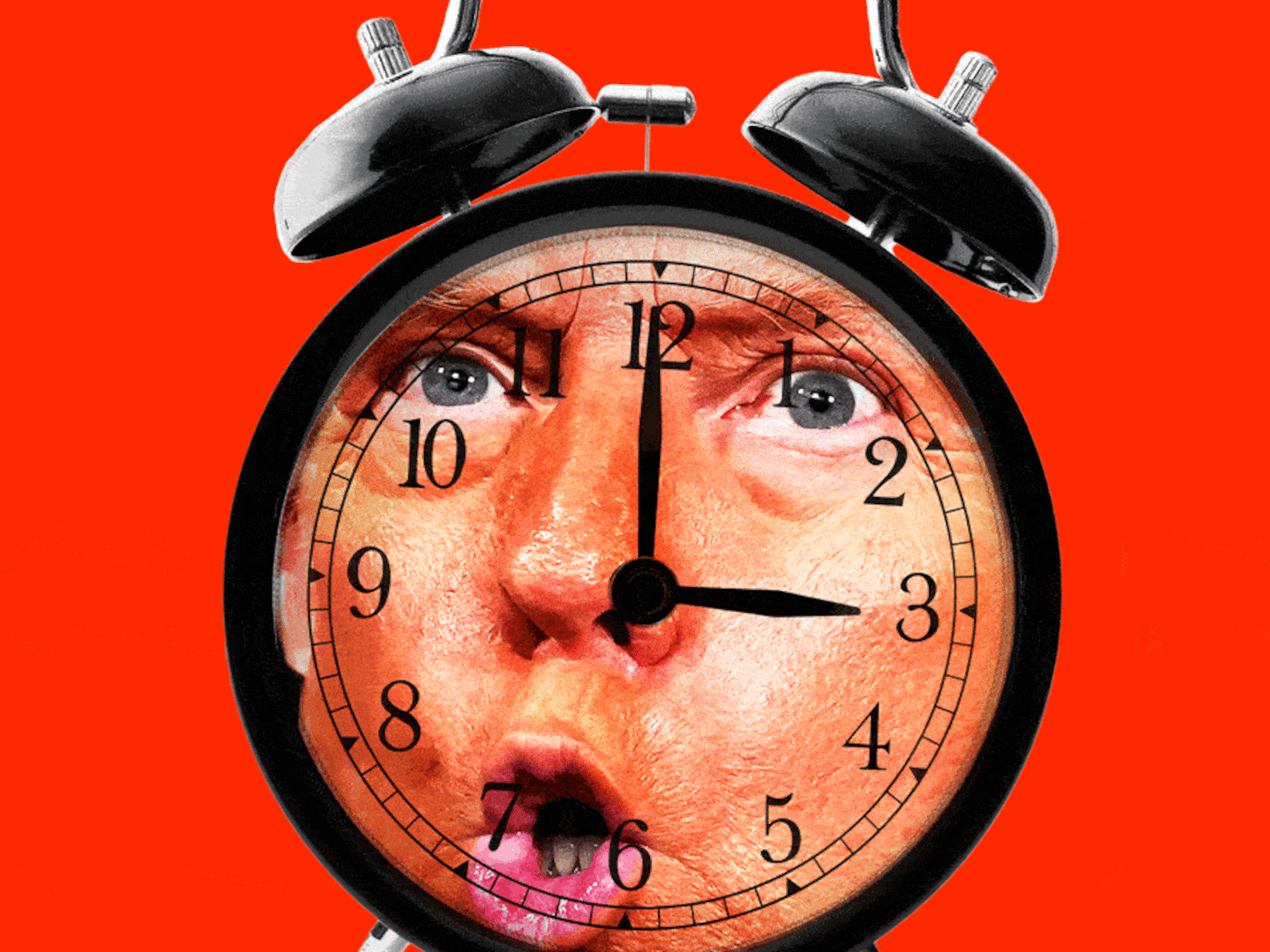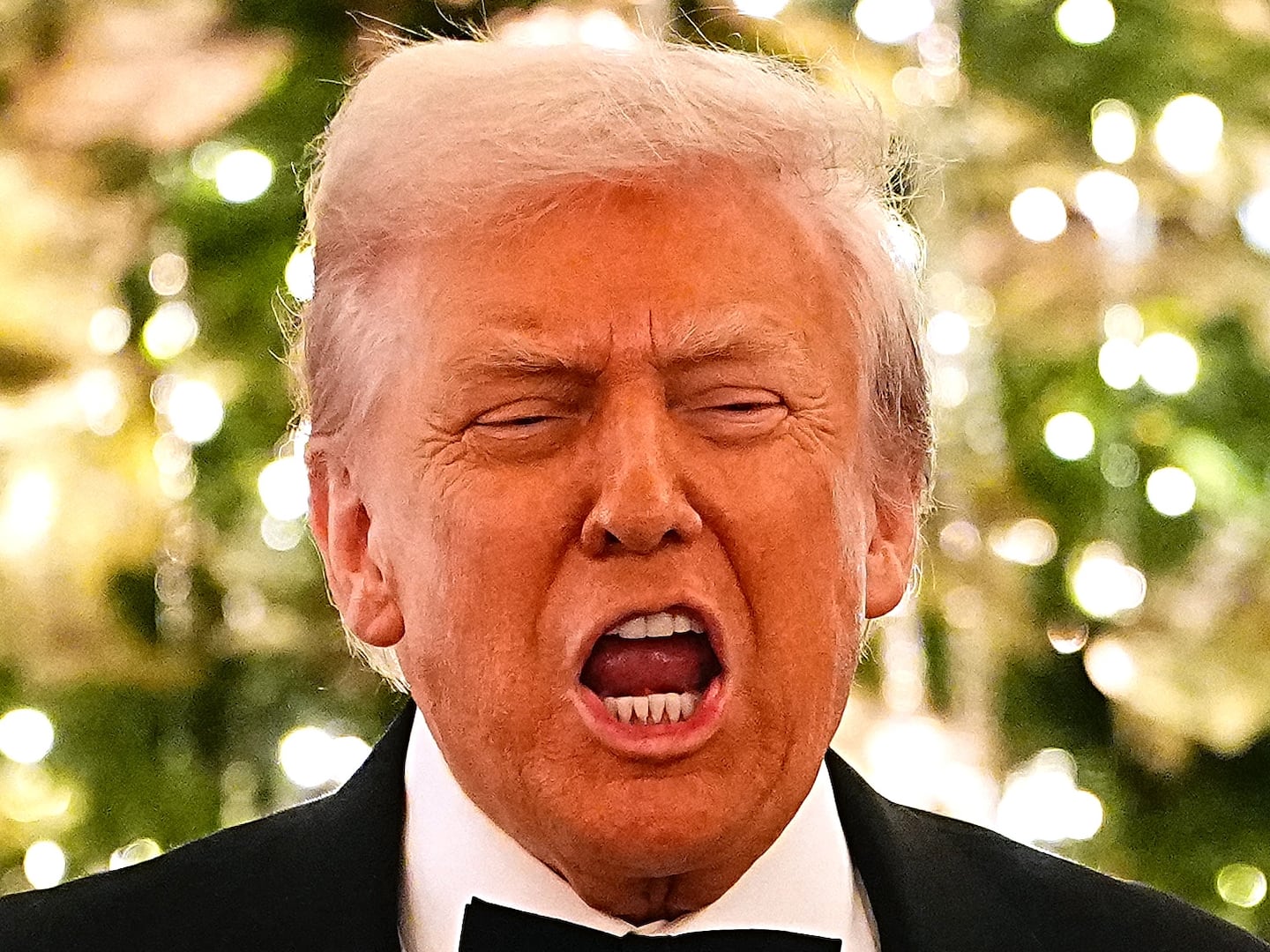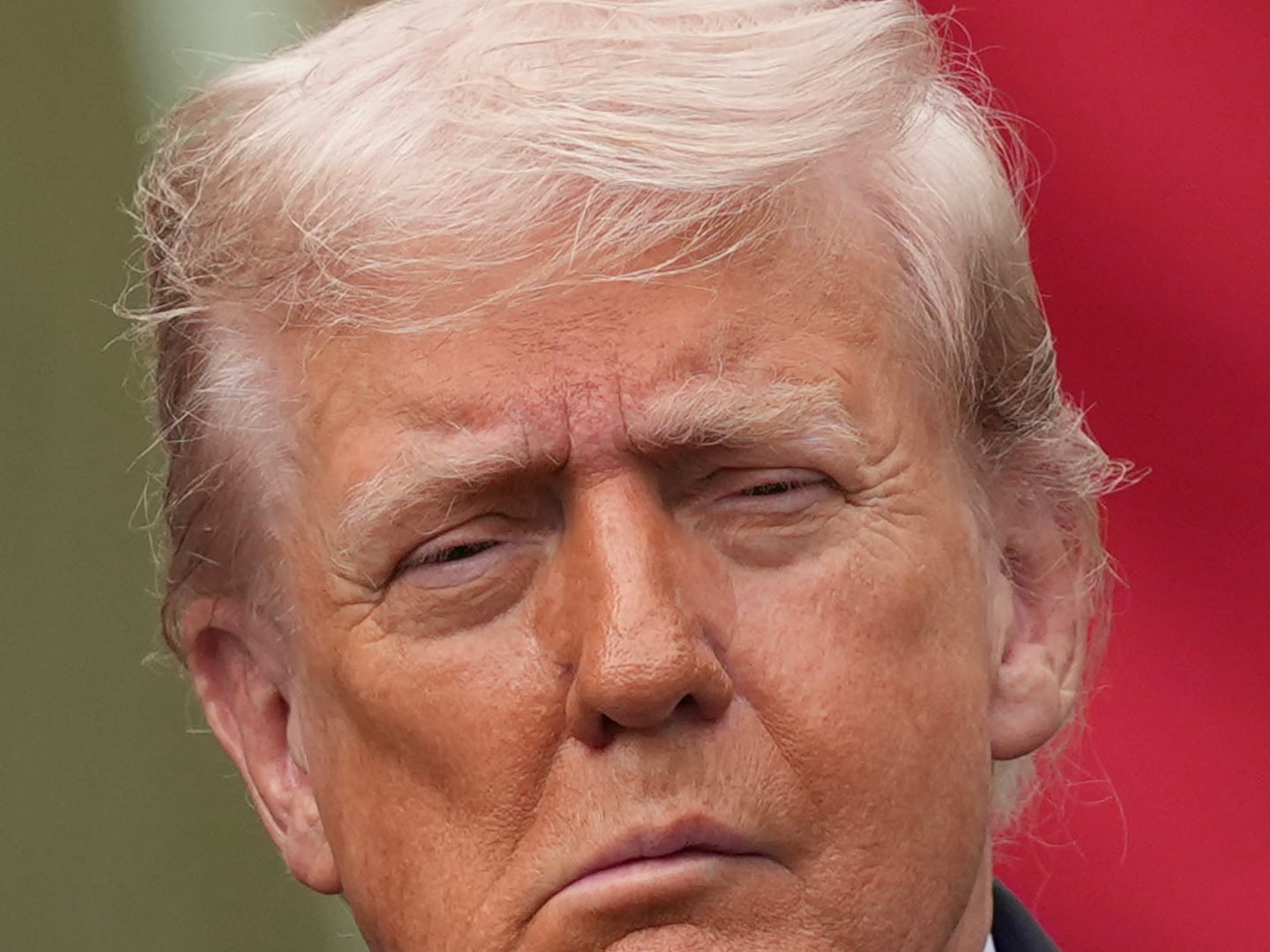Lord Byron observed, in skewering one of his favorite poetic targets of derision, that while the English have no word so good as the French longueurs to describe tedious, uninterrupted stretches of writing, they nevertheless “have the thing.” Similarly, there is no proper American term for what Russian intelligence calls aktivniye meropriyatiye, or active measures, but by now most Americans really ought to be used to the thing, as it might well decide our next presidential election.
As The Daily Beast reported Monday, the FBI now suspects that a year-long hacking of the Democratic National Committee’s emails and their subsequent publication on WikiLeaks was actually the work of Russian intelligence.
The Kremlin, it is now widely believed, is trying to rob Hillary Clinton of her chance to be the next commander-in-chief because its favored candidate is Donald Trump, a mercenary authoritarian who behaves and sounds like a forbidding cross between Vladimir Zhirinovsky and a Las Vegas pit boss. Trump, like Putin, wants to eviscerate NATO, dispense with “lecturing” the Russians on democracy and human rights, and lift any and all diplomatic or economic penalties on Moscow for its invasion and occupation of Ukraine.
Trump, like Putin, draws on a staff of consiglieri and advisers who have extensive experience in the financial and political sectors of the post-Soviet sphere, usually on behalf of those who wish the Berlin Wall had never come down.
According to a mounting pile of compelling news reports, the first of which broke in The Washington Post in June, two separate agencies of Russian spy services, the domestic FSB and the military GRU, gained access, independently of each other and without the other’s cognizance, to the DNC correspondence beginning in the summer of 2015 (the FSB) and followed by an intrusion registered in April of this year (the GRU).
Already, the “leaked” emails, showing the DNC cooking up ways to sink Bernie Sanders’s campaign on the basis of his suspected atheism, have deepened a schism within the Democratic Party as its nominating convention gets going. DNC Chairwoman Debbie Wasserman Schultz is out of a job come Friday, and meanwhile she’s busy being booed at luncheons and confabs by incensed Bernie supporters in Philadelphia. Trump is already capitalizing on these embarrassments by egging on the Bernie Bros to stand their ground and reaffirming the “rigged” nature of the electoral system.
If Moscow Centre is indeed behind this bit of cyber skulduggery, then it represents the boldest intrusion ever by a past and present Cold War adversary into America’s political decision-making.
Indeed, the style and purpose of this intrusion bears an uncanny resemblance to old Cold War tradecraft.
An active measure is a time-honored KGB tactic for waging informational and psychological warfare designed, as retired KGB General Oleg Kalugin once defined it, “to drive wedges in the Western community alliances of all sorts, particularly NATO, to sow discord among allies, to weaken the United States in the eyes of the people in Europe, Asia, Africa, Latin America, and thus to prepare ground in case the war really occurs.”
The most common subcategory of active measures is dezinformatsiya, or disinformation: feverish if believable lies cooked up by Moscow Centre and planted in friendly media outlets to make democratic nations look sinister.
As my colleague Peter Pomeranzev and I discovered in researching our report on the Kremlin’s weaponization of money, culture, and information, some of the most famous conspiracy theories to bombinate in backrooms, basements, street corners, college dorms were actually whole-cloth inventions of the Cheka.
For instance, a story suggesting that Jimmy Carter had a “Secret Plan to Put Black Africans and Black Americans at Odds”; that the United States used chemical weapons in the Korean War; that AIDS was an invention of the CIA; that the Jonestown massacre was by U.S. intelligence; that the United States tried to kill Pope John Paul II; that Barry Goldwater and the John Birch Society were in cahoots to mount a coup d’état in Washington, D.C.
Many in 1963 doubted that Lee Harvey Oswald acted alone in murdering John F. Kennedy; but only a precious few ever saw their paranoid Grassy Knoll explanation transformed into a Hollywood blockbuster. American researcher Max Holland found that the KGB fabricated letter that got planted in the Italian newspaper Paese Sera was the first to allege that one of the suspects for the Kennedy assassination, Clay Shaw, a New Orleans businessman, was actually an operative of Langley. The New Orleans district attorney, Jim Garrison, got hold of a copy of that letter and while he never cited it in court, his film version Kevin Costner most certainly did in the paranoid Oliver Stone movie JFK.
Vasili Mitrokhin, a retired KGB archivist who defected to the West and smuggled out six enormous cases of Soviet foreign intelligence files, later recorded that the “KGB could fairly claim that far more Americans believed some version of its own conspiracy theory of the Kennedy assassination, involving a right-wing plot and the U.S. intelligence community, than still accept the main findings of the Warren Commission.”
Mitrokhin’s archive also settled another long-running debate about an actual CIA provocateur, the defector Philip Agee, whose KGB code name was PONT.
Agee had been an officer stationed in Latin America and was forced to quit the agency because he drank, was loose with government money and all too eager to take to bed the many wives of the many American diplomats in whose company he traveled.
Then, in 1973, as Mitrokhin and Christopher Andrew recount in The Sword and the Shield, the first volume of a two-part history on the exfiltrated secrets of the U.S.S.R.’s special services, Agee walked right into the rezidentura in Mexico City.
He offered the Russians “reams of information about CIA operations,” according to Oleg Kalugin, who was then head of the KGB First Chief Directorate’s counterintelligence division. But the Soviets thought this too good to be true; Agee struck them as a “dangle,” a deep cover operative posing as a would-be defector in order to hawk faulty intelligence. So they turned him away. He next tried the Cubans, who found him legitimate.
Because of Havana’s close security relationship with Moscow (one that had actually been coerced by the Soviets through anti-Castro espionage and economic blackmail), Cuba’s own intelligence service, the DGI, shared their new asset with their KGB masters. “As I sat in my office in Moscow reading reports about the growing list of revelations coming from Agee,” Kalugin later wrote, “I cursed our officers for turning away such a prize.”
Agee’s first act as a Soviet spy was to name names of his old American comrades in a best-selling book titled Inside the Company: CIA Diary. It was first released in Britain in 1975 and possibly curated by Agee’s KGB and DGI handlers. He outed 250 CIA officers and agents before he set about exposing those stationed in the capital of America’s closest Cold War ally, London, where he now took temporary residence, much like another controversial “whistleblower.”
Agee was eventually expelled from Britain, owing to U.S. diplomatic pressure, but not before becoming a left-wing celebrity, feted and defended by a raft of Labour MPs and The Guardian newspaper.
Miktrokhin and Andrew are generous in acquitting most of Agee’s admirers as mere useful idiots rather than duplicitous co-conspirators. Nevertheless, PONT’s KGB file boasted of his stature as a putative transparency advocate and martyr of free speech, notwithstanding his clandestine and destructive work on behalf of a communist superpower: “Campaigns of support for PONT,” the file noted, “were initiated in France, Spain, Portugal, Italy, Holland, Finland, Norway, Mexico and Venezuela.”
In 1978, Agee began publishing his own newsletter, Covert Action Information Bulletin, a WikiLeaks-style journal designed, in Agee’s own words, as a “worldwide campaign to destabilize the CIA through exposure of its operations and personnel.”
The Bulletin was a KGB and DGI operation; the entire project was given the code name RUPOR (Russian for “mouthpiece”). Besides its internationally recognizable founder, other editors included other Americans, such as the journalist Louis Wolf, and featured contributions from other former CIA officers, although Miktrokhin and Andrew state that there’s no evidence that anyone other than Agee knew which foreign governments were actually underwriting the Bulletin.
As an active measure, the pamphlet was a mixture of credible stolen intelligence and dezinformatsiya. Sometimes the KGB would feed Agee real morsels from Langley; elsewhere, when these proved impossible to come by, he was instructed to seek out open-source material “ranging from readers’ letters to crises around the world which could be blamed on the CIA,” as Mitrokhin and Andrew write. This is how the Jonestown massacre became an American crime.
The Russians and Cubans even set the schedule for when Western national security secrets, be they authentic or sham, were to be disgorged. Around the time of the Bulletin’s first issue, Agee and Wolf started handing out copies of a new book, Dirty Work: The CIA in Western Europe, which carried the names of another 700 CIA employees scattered across the free countries of the continent. The success of that volume encouraged a sequel, which was duly produced as Dirty Work II: The CIA in Africa. Its publication, the KGB and DGI jointly decided, would coincide with a Castro-hosted conference in Havana for the non-aligned nations in September 1979.
Closer to our own time, following the invasion of Ukraine, we have seen the recrudescence of active measures as a form of Russian “hybrid warfare.” Sometimes they’re aimed at the United States, as when a phone call between Victoria Nuland, the assistant secretary of state for European and Eurasian Affairs, and Geoffrey Pyatt, the U.S. ambassador to Ukraine, was suddenly uploaded to the internet and framed to show a shadowy plot to not only influence the course of Ukraine’s post-Yanukovych period but also drive a wedge between Washington and Brussels.
(That phone call had Nuland at one point say that the UN ought to be brought in to facilitate a peace deal deal and “fuck the EU.”) Few doubt who intercepted this communication and posted it online; Nuland herself, in conversation with the BBC, smilingly called “the tradecraft really quite impressive.”
A subsequent phone exchange between former Estonian Foreign Minister Urmas Paet and former European Higher Commissioner for Foreign Affairs Catherine Ashton appeared to call into question who, exactly, did the sniping on Kiev’s Independence Square during the Maidan Revolution—with the suggestion being that it was the opposition, not the Yanukovych government shooting civilians. (Paet had talked to a Ukrainian doctor who tended to the wounded on the square and had either misunderstood where she said the gunfire had come from or was just relaying to Ashton alternative theories.)
Finally, everyone remembers how the NSA listened in on German Chancellor Angela Merkel’s private cellphone calls, a bombshell report, tied to the Edward Snowden leaks, which put a frost on U.S.-German relations. Except that it seems the entire story, first reported in Der Spiegel (and primarily written by a WikiLeaks associate, Jacob Appelbaum) was wrong—even if the vast majority of Snowden’s disclosures were genuinely and self-evidently scandalous.
Germany’s top prosecutor, Harald Range, opened an investigation in June 2014 and closed it a year later, citing a lack of evidence. “The documents published in the media so far that come from Edward Snowden also contain no evidence of surveillance of the mobile phone used by the chancellor solid enough for a court,” Range said. Prior to closing the case, he had noted that the supposed gotcha document proving the NSA was listening in on an allied head of state’s personal conversations was in fact “not an authentic surveillance order by the NSA. It does not come from the NSA database.”






